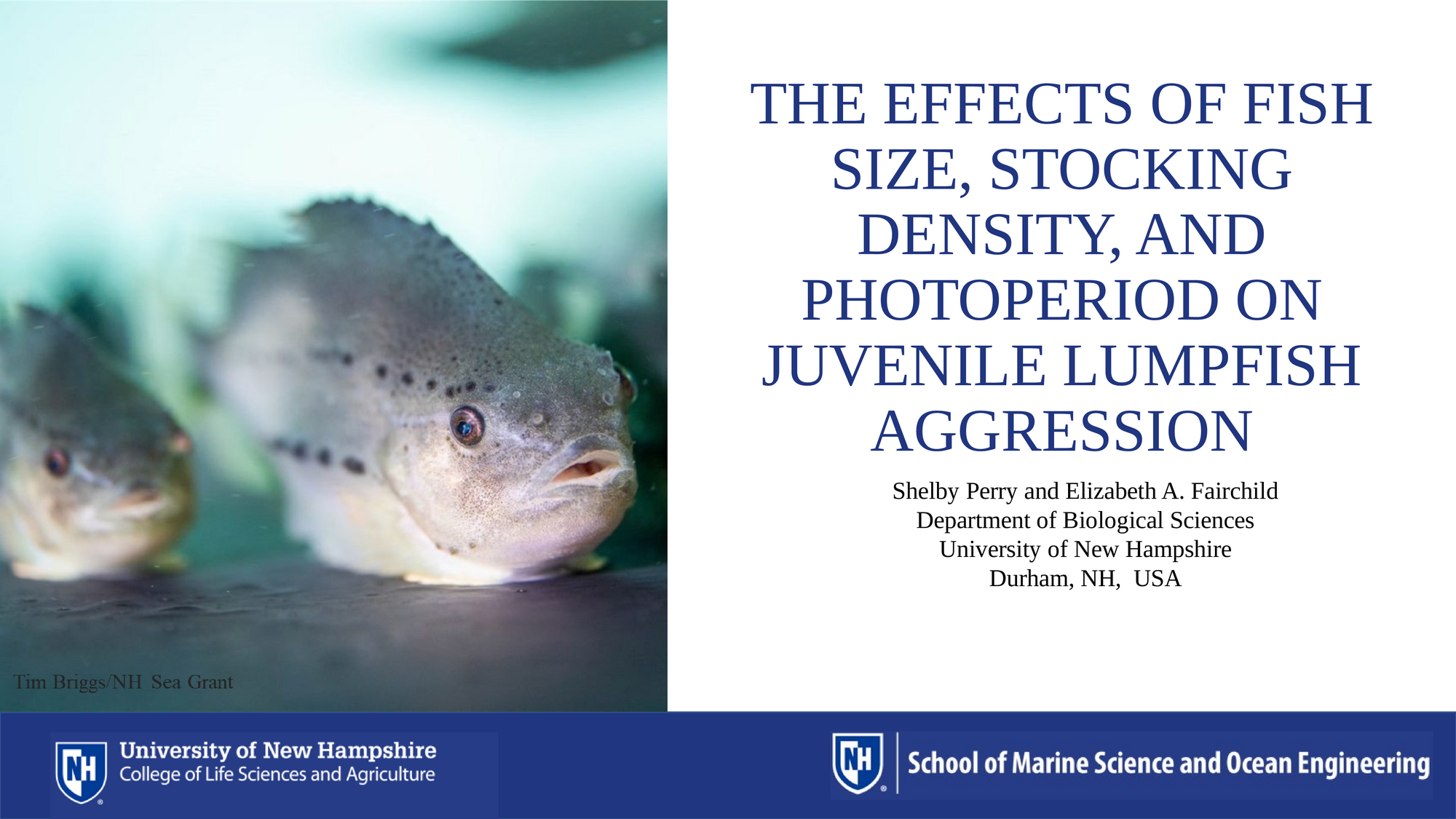Title:
THE EFFECTS OF FISH SIZE, STOCKING DENSITY, AND PHOTOPERIOD ON JUVENILE LUMPFISH AGGRESSION
Slideshow Presentation
Best viewed by downloading
Preview Converted Images may contain errors

Abstract
Due to the high demand for cleanerfish in salmonid ocean farming operations, increasing lumpfish hatchery production and rearing efficiency are of great importance. Juvenile lumpfish are cannibalistic which is controlled, to some extent, though frequent size grading of the fish, however, cannibalism still occurs. Understanding and mitigating for factors that exacerbate aggressive behaviors in juvenile lumpfish, which can lead to cannibalism, would help achieve the goal of increasing juvenile production in the hatchery. We hypothesize that lumpfish cannibalism is linked to a specific ontogenetic period related to fish size and can be exacerbated by various stressors such as stocking density and photoperiod.
To test this hypothesis, we subjected two different size classes of juvenile lumpfish (5 g and 11 g) to varying densities (40 g/L, 65 g/L, or 90 g/L) under different photoperiod regimes (ambient, constant low light, or constant bright light) for an 8-week duration in winter 2022. Fish growth, survival, and aggression were measured biweekly, and stocking densities adjusted to baseline levels biweekly by removing any necessary fish.
Light significantly affected the overall percent growth (two-way ANOVA, P <0.001) of 5 g lumpfish. In the ambient light treatment, 5 g fish grew 31.5 % faster than fish in the low light treatment (P < 0.01) and 28.5 % faster than fish in the high light treatment (P < 0.05). Stocking density did not have a significant effect on overall percent growth (two-way ANOVA, P =0.06). Unlike the 5 g lumpfish, neither stocking density (two-way ANOVA, P =0.331) nor light (two-way ANOVA, P = 0.105) significantly affected the overall percent growth of the 11 g fish. In support of our hypothesis, we did find a significant interaction between stocking density and light on aggressive behavior in 5 g fish (Binomial Generalized Linear Mixed Model, P<0.05). Fish in the low light 40 g/L treatment had significantly less fin nipping than those in the low light 65 g/L and high light 40 g/L treatments. Fin nipping occurrence amongst the 5 g fish ranged from 38.40 ± SE 10.40 % to 60.00 ± SE 5.00 %. Fin nipping amongst the 11 g fish was not significantly affected by either stocking density or light (Binomial Generalized Linear Mixed Model, P >0.5). For 11 g fish, fin nipping occurrence ranged from 4.80 ± SE 8.2 % to 36.7 ± SE 32.1 %. A trend towards higher fin nipping in smaller fish was observed (~45 % fin nipping occurrence in 5 g fish vs ~ 20 % in 11 g fish), indicating that cannibalism may be even greater when fish are < 5 g but decreases as the fish grow.
Manipulating lighting and stocking density (up to 90 g/L) can be used to suppress or increase growth rates in small lumpfish, depending on a hatchery’s desired outcome, without resulting in an increase in fish aggression. However, these variables are less effective tools for controlling growth in larger juveniles. Future studies should focus on how these variables affect lumpfish < 5 g as there are indications that aggression is most severe at this size class.
Authors
| First Name |
Last Name |
|
Shelby
|
Perry
|
Leave a comment
Submission Details
Conference GRC
Event Graduate Research Conference
Department Marine Biology (GRC)
Added April 5, 2023, 11:54 a.m.
Updated April 5, 2023, 11:59 a.m.
See More Department Presentations Here